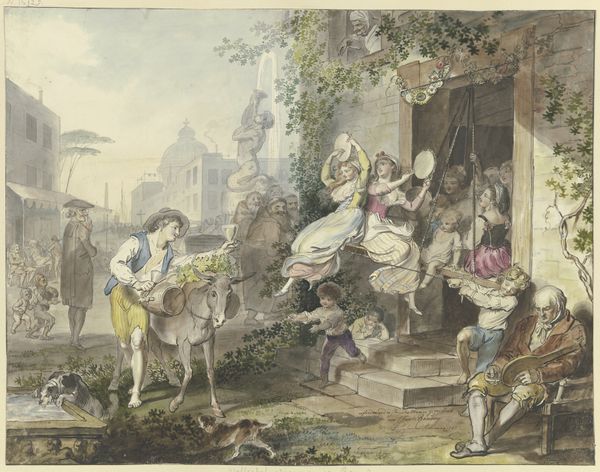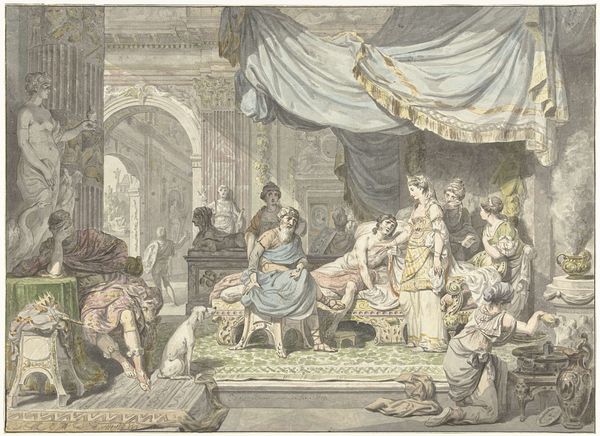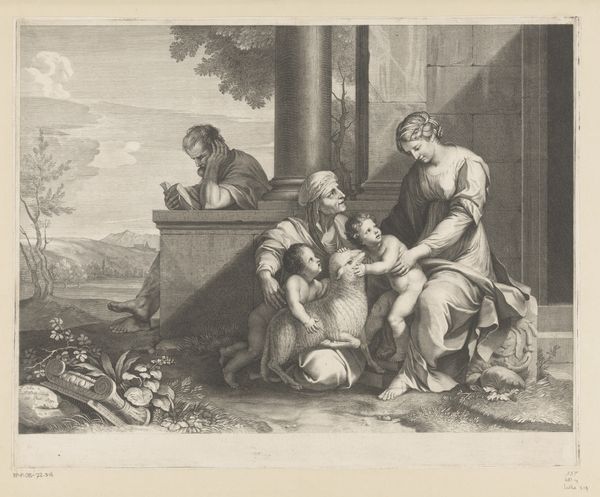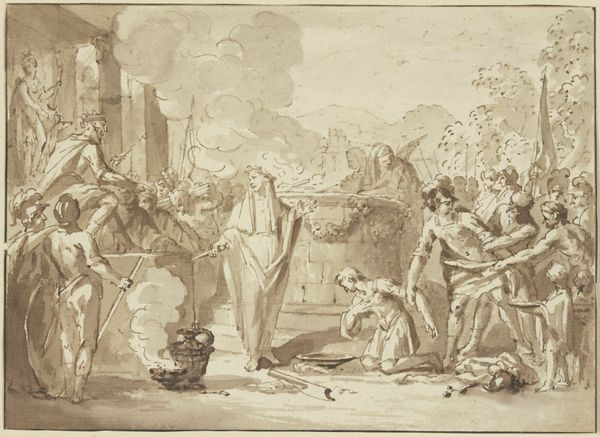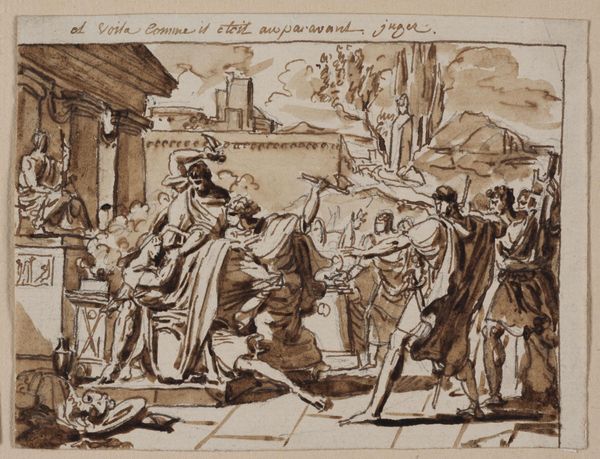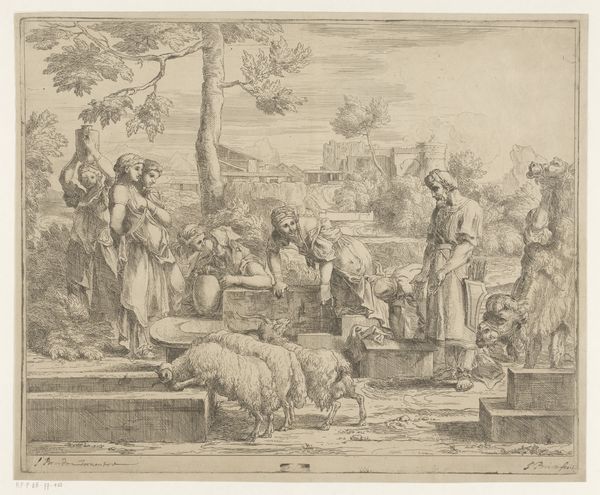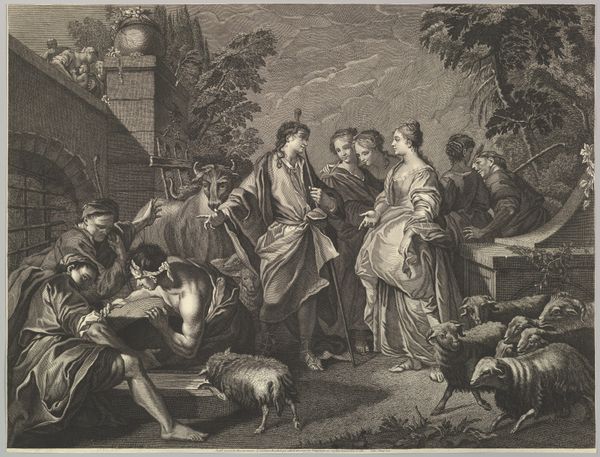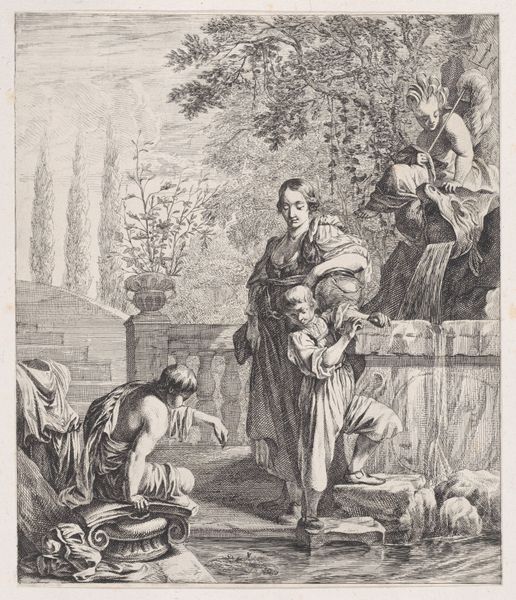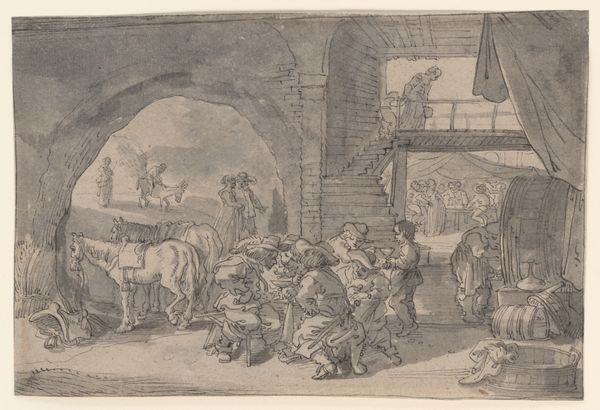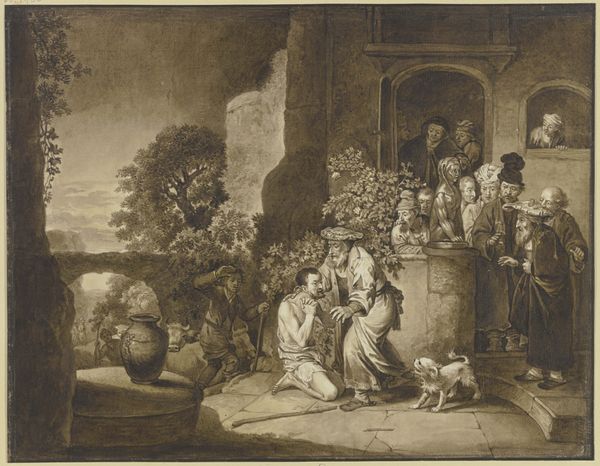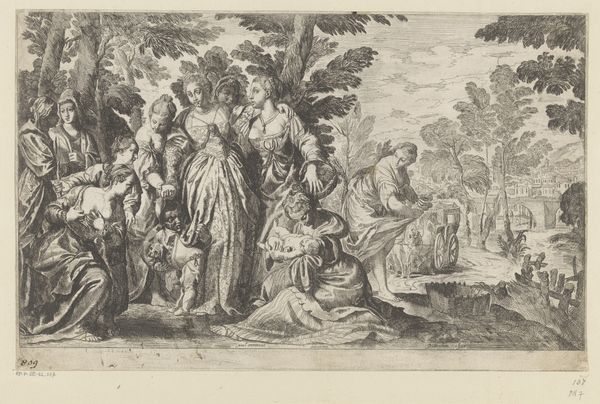
drawing, coloured-pencil, painting, paper, watercolor, ink, graphite
#
drawing
#
coloured-pencil
#
narrative-art
#
painting
#
figuration
#
paper
#
watercolor
#
ink
#
coloured pencil
#
classicism
#
romanticism
#
graphite
#
genre-painting
Copyright: Public Domain
Editor: Johann Heinrich Ramberg’s 1797 drawing, "Dolce far niente in Naples," depicts a scene filled with figures both within a grand building and in what looks like a public garden. It's incredibly detailed. What catches my eye is the contrast between the apparent leisure of the subjects and, what feels to me, their impoverished conditions. How do you interpret this contrast within its historical context? Curator: It’s precisely this juxtaposition that makes Ramberg's piece so intriguing. We see the phrase "Dolce far niente," or "sweet doing nothing," enacted against a backdrop rife with socio-economic disparity. The print was made in 1797. To really understand this work, it’s useful to look into the cultural role of Naples at the time as a key destination on The Grand Tour. Editor: The Grand Tour? Curator: Yes, an elite pilgrimage, of sorts, in which mostly wealthy Norther Europeans traveled through Southern European countries like Italy to enjoy artistic attractions and cultural events. So, Ramberg seems to critique or perhaps comment on the Grand Tourists' perceptions and interactions with Neapolitan society. This composition seems deliberately staged to bring certain types of figures into close contact. Can you spot any recurring social types depicted? Editor: I see religious figures like monks, plus what look like wealthier families enjoying leisure, side-by-side with the less fortunate, even beggars near the fountain. Curator: Exactly. Consider how Ramberg positions "Nutrimentum Spiritus" near the religious order, with "Biblioteca" nearly covered and dark! Is the "doing nothing" really sweet for everyone in this setting, or is it a privilege built on societal imbalance? That's the question the imagery provokes. Editor: So, Ramberg might be using the seemingly innocent scene of leisure to critique the social order of Naples? It reframes that phrase, 'sweet doing nothing' when we examine its role in cultural exchanges. I didn’t initially pick up on such rich potential meanings! Curator: Exactly! It showcases how art actively engages with and reflects on cultural and socio-political forces of its time. I think a bit of art historical investigation always helps an image to deliver a richer interpretation.
Comments
No comments
Be the first to comment and join the conversation on the ultimate creative platform.
